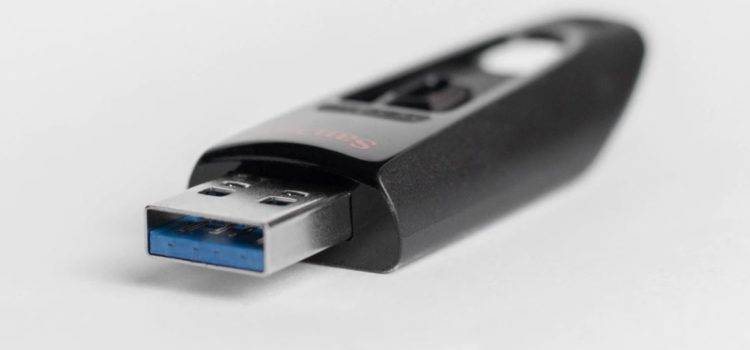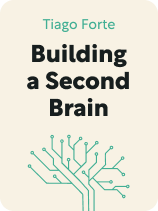

This article is an excerpt from the Shortform book guide to "Building a Second Brain" by Tiago Forte. Shortform has the world's best summaries and analyses of books you should be reading.
Like this article? Sign up for a free trial here.
What are the different methods of storing information? What is an external storage system?
In Building a Second Brain, Tiago Forte claims that modern humans need an external storage system (ESS). This is a digital platform to store all the important ideas, information, and work they encounter.
Continue reading to learn Forte’s advice for using your external storage system effectively.
How to Effectively Use Your External Storage System
Forte explains that you must learn how to use your ESS in a way that increases your productivity and creative potential. His process for utilizing your ESS mirrors the creative process, which he explains has two modes: expansion and contraction. (Forte calls these modes divergence and convergence, respectively.) First, you must expand the possibilities of a project or goal to include all relevant information and resources. Then, you must contract by narrowing your scope, cutting extra information, and refining your product or idea until you have a final result.
Forte explains that the first two methods of storing information are to record information and sort it into relevant folders where you can utilize it (these are the condense and organize steps of Forte’s CODE system for saving information). These steps are part of the expansion mode of the creative process—they’re designed to gather relevant information that gets your creative juices flowing and sparks new ideas.
The second two steps of using your ESS are to refine your notes to their most important parts and use them to create something (these are the distill and express steps of Forte’s CODE system). These steps are part of the contraction mode of the creative process—they’re designed to narrow the scope of your information and propel you toward the completion of your goals.
The following sections will explain in detail each step of using your ESS to store information.
Step #1: Record
Before you start recording your notes, Forte says you should pick one platform that will house your ESS and make sure all your saved information is sent there. There are numerous information storage apps to choose from, a list of which Forte explains can be found on his website. Once you’ve selected your platform, ensure that the information you save on other platforms—like ebook apps, social media apps, or mobile phone notes apps—is sent to your ESS inbox folder. Some content storage apps feature an automatic export function, but others may require you to export saved information manually.
(Shortform note: Automatically exporting notes from one platform to another is getting increasingly difficult due to issues involving privacy and copyright. Rather than clicking a button and having a compilation of notes exported, people often have to copy and paste each note individually or re-type information from one source to another when the “copy” function isn’t available. However, Evernote, a popular note-taking software, allows you to directly import digital information using its Web Clipper tool. This will save you time and effort when content apps like Kindle don’t have automatic export features or don’t allow you to copy and paste text.)
Next, record all important information that you come across—this can be anything from personal insights or realizations to quotes from articles or meeting notes. However, Forte warns to only save information that resonates with you or makes you reflect—it must be either inspiring, useful, personally important, or something that changes your current ideas or beliefs. If you’re not selective with the information you save, your ESS will end up being cluttered and unmanageable.
(Shortform note: In Getting Things Done, David Allen recommends a similar system for recording important information; however, his opinion on what to save differs from Forte’s. Rather than only saving information that’s either inspiring, useful, personally important, or changes your beliefs, as Forte recommends, Allen suggests saving any idea that’s stuck in your head. Doing so will rid your brain of all “mental clutter” and therefore restore your mental energy, which you’ll need later when it’s time to sort ideas into different folders.)
When you record information, save only what’s necessary for it to be actionable and for you to remember why it’s important. For example, if you liked one photo from an article you read, save the photo instead of the whole article. Or, if you find an article that you don’t have time to read but think might be useful, record the link and include a brief note explaining why you’re saving it to remind yourself later.
(Shortform note: Some education experts agree with Forte that good notes only capture the components necessary for you to understand and utilize them later. They add a few tips to make this recommendation more actionable. First, record any questions you have or confusing parts of the content so you can fill in logic gaps later and ensure you fully understand the information. Second, use a visually clear and concise note-taking format, and use the same format every time—this will ensure notes are easy to read and understand in the future. Third, use abbreviations, symbols, bullet points, or short phrases rather than complete sentences in your notes to help you focus on the main concepts and record information quicker.)
Step #2: Sort
In the next method of storing information, Forte explains that you should sort your saved information out of your inbox and into your folders at a designated time, not immediately after saving something. He recommends setting time aside at least once a week to clear your inbox and sort information into folders and sub-folders.
(Shortform note: While Forte recommends clearing your ESS inbox once a week, experts argue that you should clear your inbox each day to increase productivity. Despite the fact that this advice pertains to your email rather than your ESS inbox, the benefits arguably still apply. Clearing your inbox daily will give you a clean mental slate and help you stay more aware of what you can accomplish immediately, ultimately expediting the creative process. For example, you might realize after clearing your inbox and sorting information on a Monday night that you have enough material to start executing a project on Tuesday. This would give you six extra days of work that you would have wasted if you’d waited until the following Sunday to clear your inbox.)
When sorting information, Forte says that you should first see if it fits in any of your current goals sub-folders. If not, consider your ongoing engagements subfolders. If it doesn’t fit there, see if it’s relevant to any of your areas of interest subfolders. If you can’t find a sub-folder to sort the information into but still feel like it might be relevant someday, put it into your hold folder.
Step #3: Refine
Forte explains that refining your notes—distilling them into their most basic format and removing any irrelevant information—should take be the method of storing information before you create something based on those notes. This shouldn’t take place at the same time as recording or sorting.
Refining your notes to their core essence will increase productivity and creativity. It’ll save time in the future by allowing you to understand the note’s utility as soon as you look at it. It’ll also make it easier for you to apply the information to other relevant current or future projects. To effectively refine your notes, Forte recommends using the following process (which he calls Progressive Summarization):
Since you’ve already saved the smallest bit of information from the source, as we discussed in the Record section, you’ll start the refinement process by bolding the main points of the small chunk of information you’ve saved. For example, if you’ve saved a paragraph from an article, find and bold the main points of the excerpt—the thesis, sentences that provide important explanations, keywords that remind you why you saved the information, or parts that especially stuck out to you. If you have an especially long or complex note, you can further distill it by highlighting or underlining the most important or surprising points of the bolded sections.
Then, for especially unique or valuable notes, Forte recommends including a short summary that explains the main points of the source and why you’ve saved it (if you might forget) in as few words as possible. Using bullet points may be helpful for this step.
Step #4: Create
Forte explains that in the final method of storing information, you’ll use your previous work—organizing your ESS, recording information, sorting information, and refining information—to create something new. This “something” may be a personal project like a travel itinerary or a professional project like a speech.

———End of Preview———
Like what you just read? Read the rest of the world's best book summary and analysis of Tiago Forte's "Building a Second Brain" at Shortform.
Here's what you'll find in our full Building a Second Brain summary:
- Why we get frustrated and overwhelmed in the age of information
- Why modern humans need an external storage system (ESS)
- How to make and organize an ESS to increase creativity and productivity






